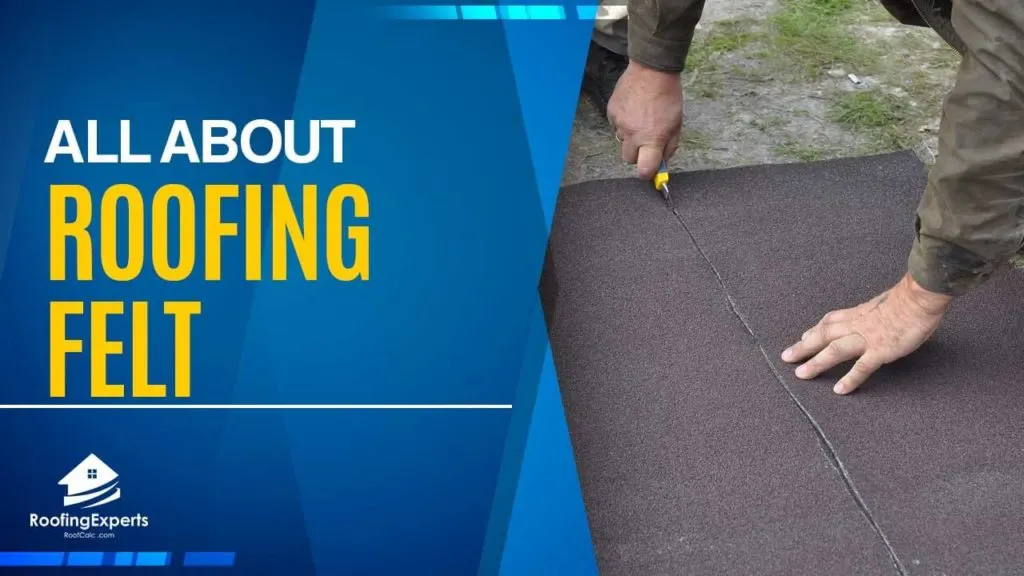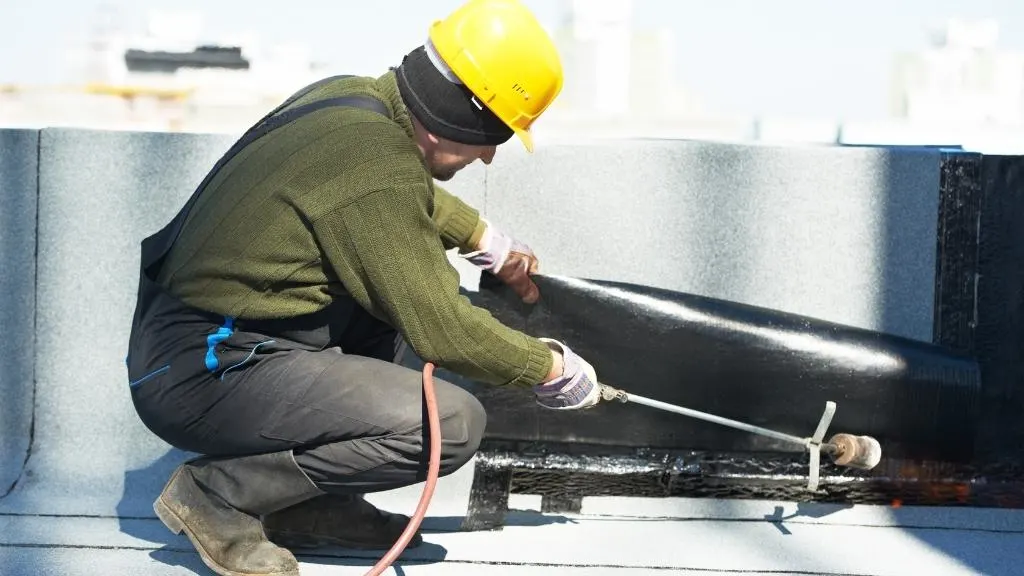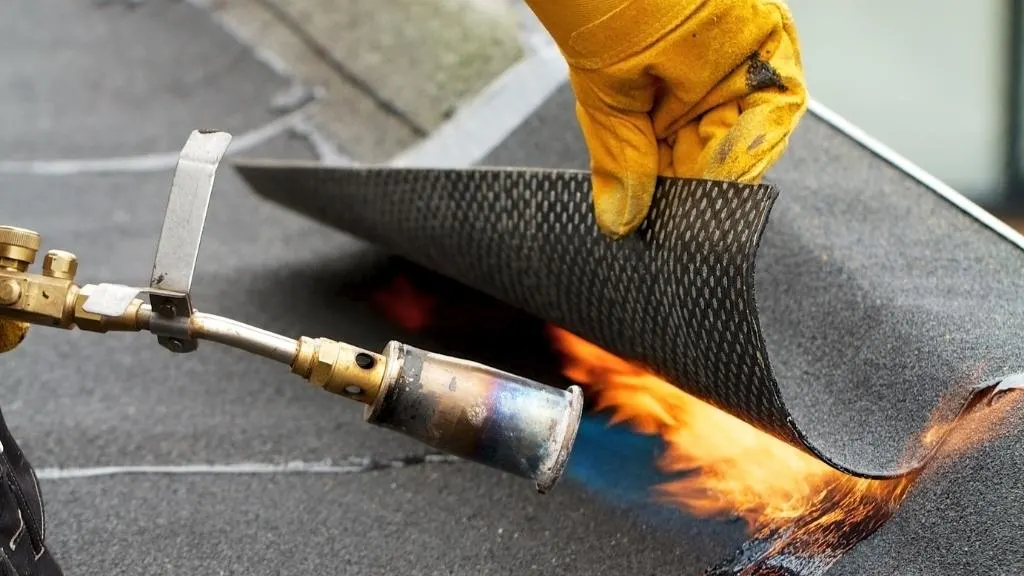
We all know a roof is an essential part of a house or building. You don’t need to be an engineer or architect to know what a roof and its importance is. Thus, you need to ensure that your roof can withstand any weather and stand for a long time.
With that, you might or might not have heard of roofing felt. This article will tackle what roofing felt is and the things you need to know about it. So keep reading and by the end of this article, you will know your roof more and how to protect it for the future.
What is Roofing felt?
Roofing felt serves as a protective layer on your roof that can shield you from any climate. It is commonly known as tar paper too according to many contractors. Although it has a slight difference from the average tar paper, it still somehow belongs to the same branch.
If you visit your neighborhood hardware store, you will find different types of roofing felt, such as fiberglass fleece and polyester. In terms of measurement, roofing felts normally come in 36 inches. You will need to do the soaking and treating process with a waterproof agent when using these on your roof.
Roofing felts also serve as a barrier for your wooden roofing. You may also see it between your roofing system and your ceiling. With that, it can prevent water, snow, and other elements to reach your roofing’s wood.
Types of roofing felt and its sizes.
When it comes to roofing felts, there are other things you need to know such as their types and sizes. There are three different types of roofing felt, namely non-bitumen synthetic, asphalt-saturated, and rubber asphalt. Here’s what you need to know between the three types:
Non-bitumen underlayment
Among the other types of roofing underlays, the non-bitumen underlayment is the unique one. It is commonly known as synthetic underlayment too. This type of roof underlay does not absorb any moisture, making it highly recommendable for extreme climates.
A synthetic underlay is mainly made of polyethylene fibers or polypropylene. Both materials are lightweight, but it has high resistance to molds and other external elements. With that, if you have this type of underlay, your roof will have a lesser chance of roof failure.
Asphalt Saturated underlayment
If you live in a temperate climate, you should get this type of roof underlay. An asphalt-saturated underlayment was popular before the synthetic underlay was invented. This type of underlay is made of refined crude oil that can repel water and stains.
Rubber Asphalt underlayment
The rubber asphalt underlayment is perfect for anyone who wants to do quick roofing felt installation. It has a self-adhesive and easy peel-off material that you can put on your roof right away. Also, if you’re going to prevent your roof from water damage, then this type of underlayment to use.
A rubber asphalt underlayment is also common for commercial roofing systems. It is also the best option to go for locations that have humid climates.
On the other hand, there are two types of roofing felt sizes. There’s one that comes in #15 and the other one #30. The only difference between these two sizes is their strength.
#15 Roofing Felt
This type of roofing felt size is less potent compared to the #30. It is also most likely easy to tear and is not as durable as the other one. However, this is the best size to go for if you want temporary protection and installation on your roof.
A #15 roofing felt can be installed in a day and could save you more time in terms of installation. Also, if you live in a location that does not experience many heavy showers of rain and storms, a #15 roofing felt can suffice. Lastly, it’s less costly than the #30, so you can also save some money.
#30 Roofing Felt
If your primary concern is more on durability, then the #30 roofing felt should be the size for you. Using this roofing felt size could guarantee a longer lifespan for your roof protection. However, one of the downsides of this is it takes days for you to install and it.
Also, buying a #30 roofing felt size could cost you more money than with the #15. However, the cost will be worth it since it can guarantee durable and robust protection for your roof.
The purpose of roofing felt.
Now that you know what roofing is felt, its types, and sizes, you must be wondering its purpose. To put it short, roofing felt is essential when installing a roof on your house or building. As mentioned in the earlier parts of this article, it protects your roof from damage and exterior elements in the environment.
Roofing felt is the final defense line of a roof system. Without it, your roof will not last for years and could require you repairs from time to time. Although shingles on the top can protect the roof system, it does not always work effectively.
Also, let us not forget that even though shingles play a huge role in roofing systems, they can bring harmful UV rays into our homes. Without proper roofing felt installed, you may get harmed by a bad climate. Although shingles are sealed, they may wear off quickly and get easily destroyed by strong winds.
It is also important to keep in mind that roofing felt will prevent you from incurring repair costs. With a strong and established roofing felt installed, you will not have to worry about broken shingles. Since roofing felt acts as a final defense of protection, your shingles will also be protected.

The protection roofing felts offer
The protection of roofing felts should not be underestimated. As your roof’s final defense, your roofing felt will protect you not only from harsh climates but also accident-prone situations such as leakage and fire. Plus, it serves as a smooth layer for your shingles to lay on, which can help protect them from harmful elements.
Roofing felt offers a more secure operating atmosphere for your contractors, which you may not realize. The roofing felt is essential because it provides a safe surface that prevents workmen from sliding and tripping when changing panels, repairing problems, or completely rebuilding the roof. The last factor any homeowner needs is for a shoddy contractor to fail on the project and be held liable for the injuries.
Is tar paper different from roofing felt?
As mentioned in the definition above, roofing felt is also known as tar paper. However, some people say they are two different things because of the material. Tar paper is made of tar, meanwhile, roofing felts are made of asphalt.
However, due to the similar ways of usage, most people consider both the same. The term tar paper has been used for centuries, making it more popular than roofing felt. But nowadays, you can now use the term roofing felt in hardware shops and stores.
Is a roofing felt automatically waterproof?
Since it is a support material for roofs and roof systems, the answer to this question is yes. Roofing felts are waterproof.
Waterproof roofing felts are seen both on commercial and residential properties.


